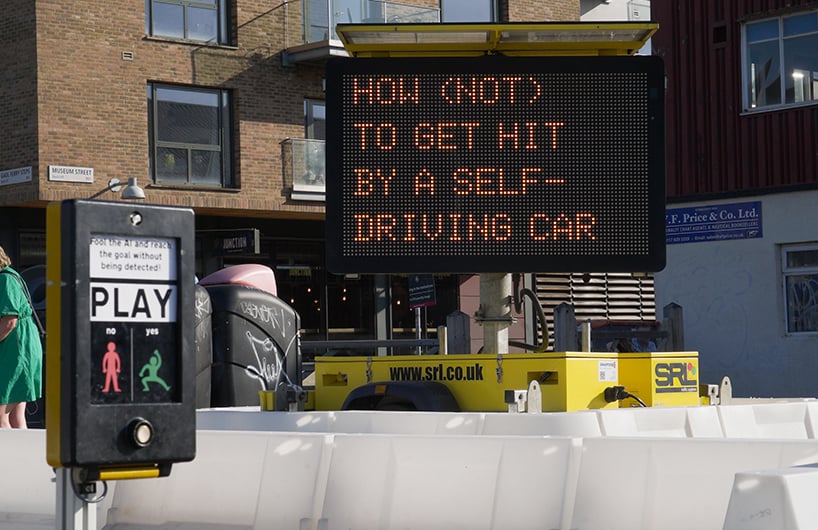how (not) to get hit by a self-driving car unveils in brighton
‘How (not) to get hit by a self-driving car’ is a public game by Tomo Kihara and Daniel Coppen, enlivening the streets of Bristol. This street-based challenge invites participants to interact with a self-driving car, uncovering its blind spots in the process. As players run, dodge, and hide to outsmart the artificial intelligence, the game entertains while also shedding light on the limitations of the system, generating vital data which can potentially make these cars smarter and safer in the future. The project was created as a commission from Playable City Sandbox 2023 supported by MyWorld, and showcased at Mshed in Bristol between 3 – 7 July 2023.

all images courtesy of Tomo Kihara
Tomo Kihara & Daniel Coppen explore safety of self-driving cars
For this gaming experience, media artist Tomo Kihara and designer Daniel Coppen of Playfool utilize the Single Shot Detector (SSD), a widely adopted object detection algorithm trained on a large-scale dataset. Each participant’s win generates crucial data that exposes the system’s shortcomings in detecting pedestrians. The flaws unveiled in these algorithms serve as a foundation for potential improvements in the realm of self-driving cars.
As a result, each victorious gameplay presents players with a consequential decision — to train the AI or not. Users can choose to share their anonymized gameplay footage, contributing to the enhancement of AI models, or opt for the immediate deletion of the data. This choice poses the question of whether individuals are willing to trade their data for a potentially safer system, or would they rather prefer to remain invisible, despite the anticipated risks of inaccuracies in future systems?

‘How (not) to get hit by a self-driving car’ is a public game by Tomo Kihara and Daniel Coppen

as players run, dodge, and hide to outsmart the AI, the game sheds light on the limitations of the system

each participant’s win generates crucial data that exposes the system’s shortcomings in detecting pedestrians

users can opt to share their anonymized gameplay footage, contributing to the enhancement of AI models
